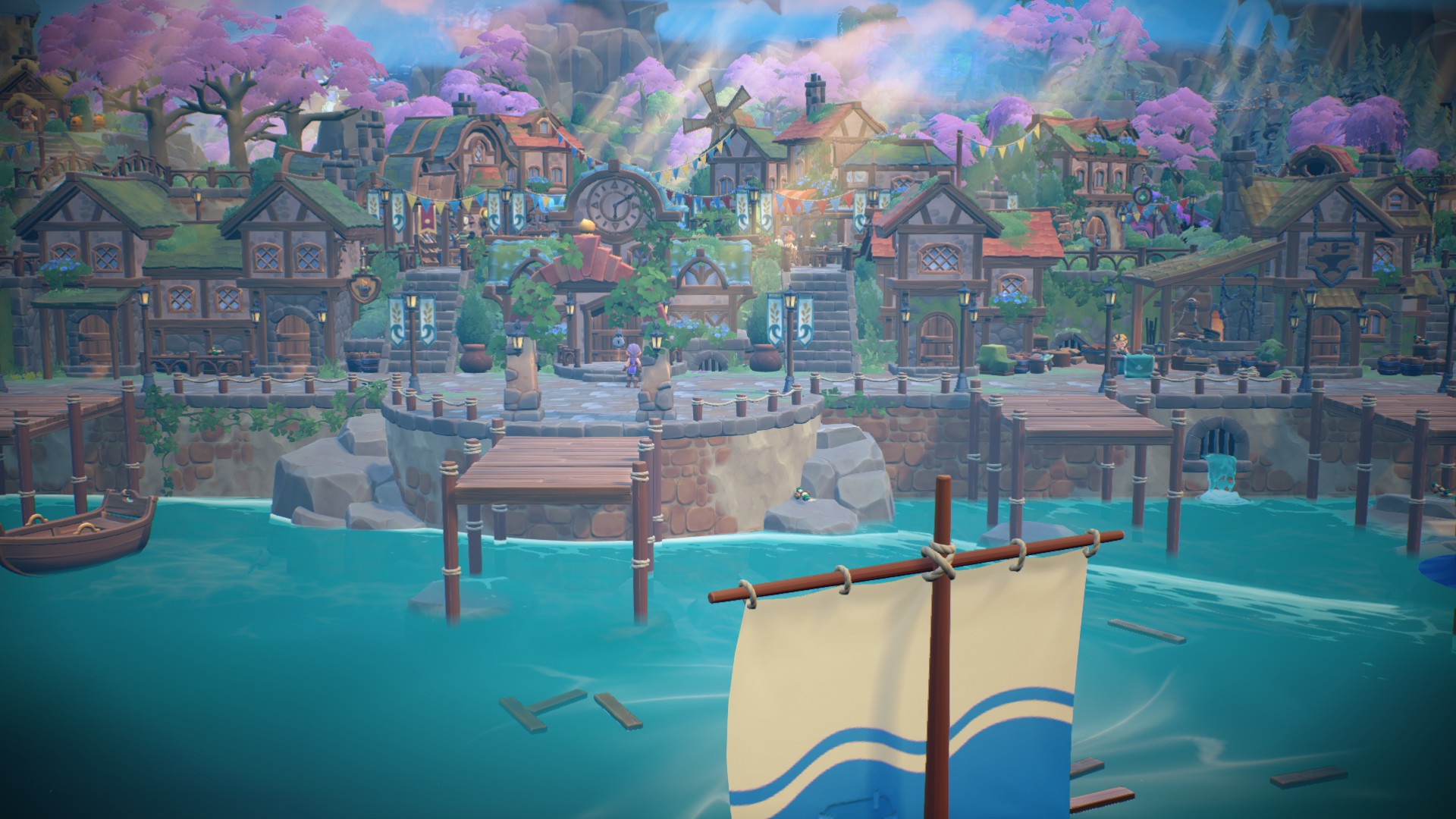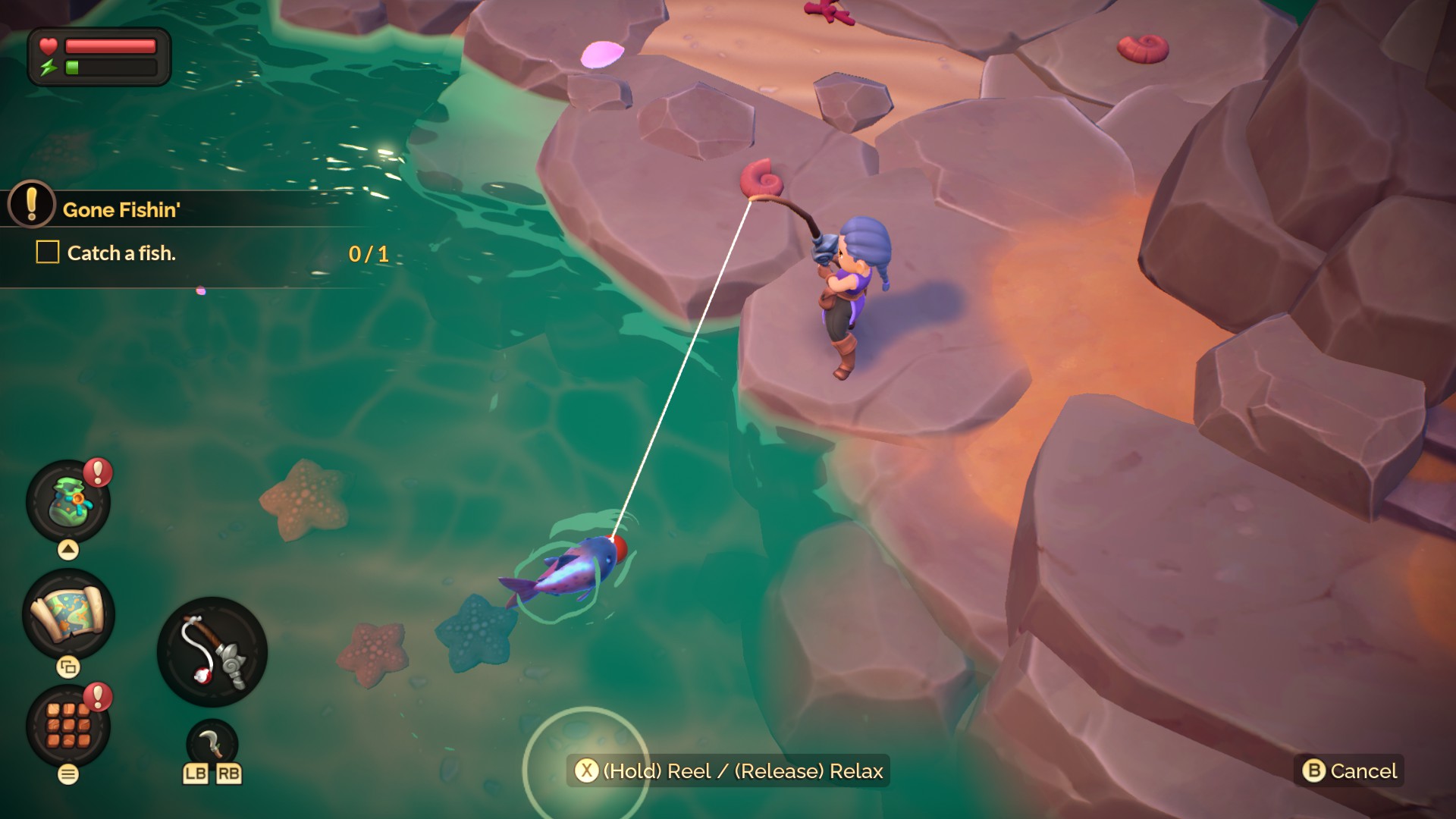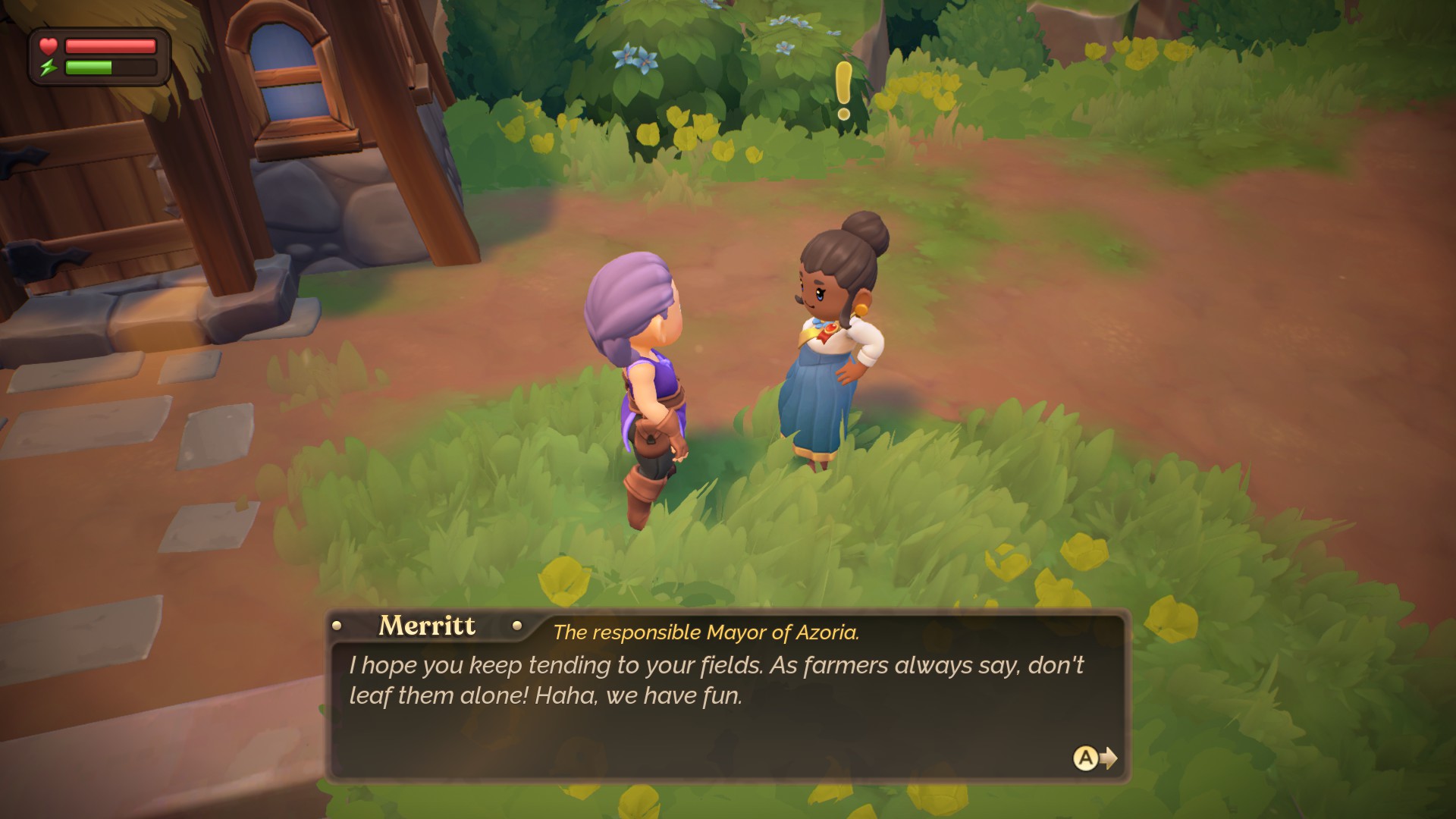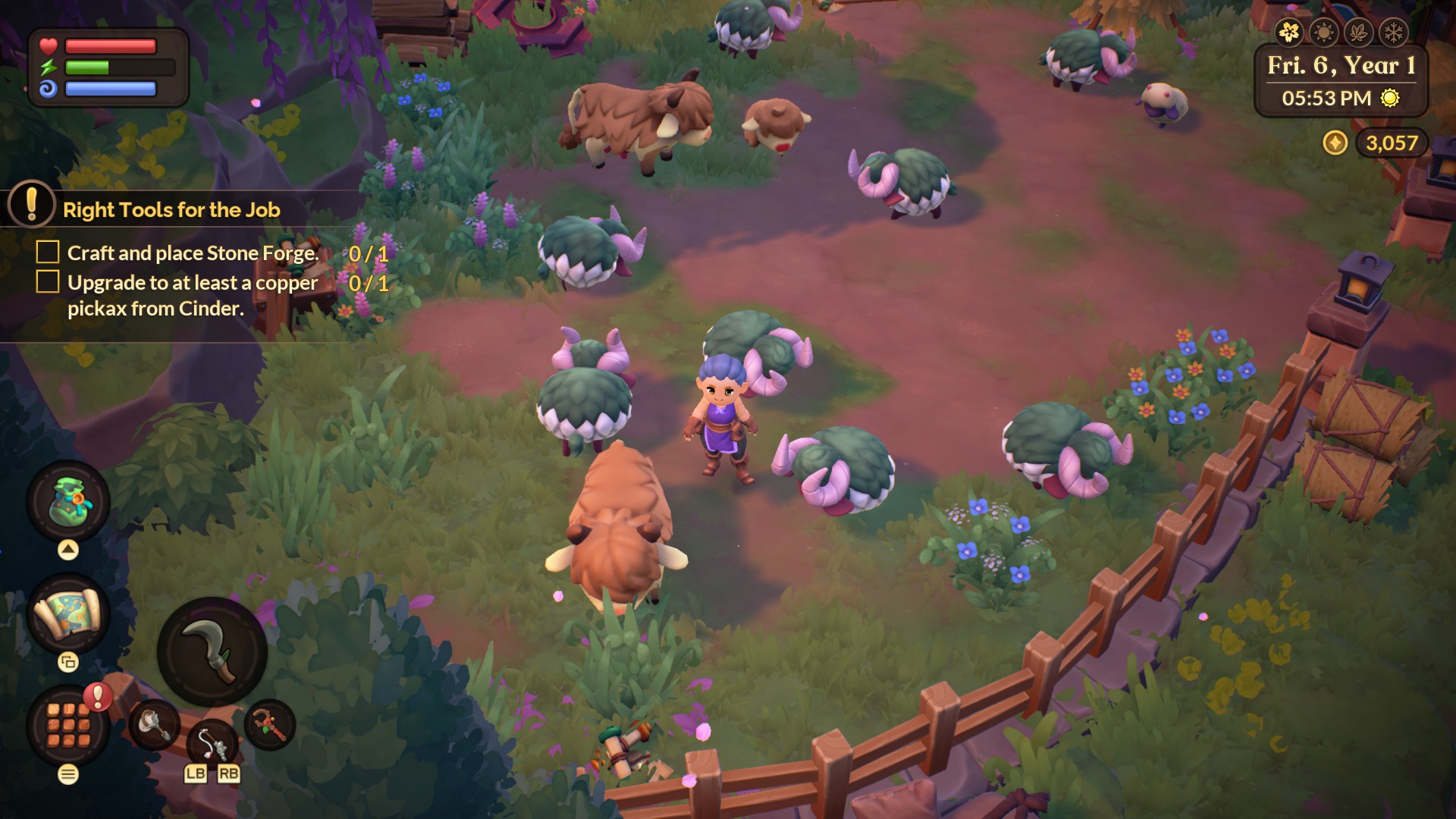
I suspect that many readers are familiar with the moment when a game has you so completely engrossed that you forget to look up to note the time and suddenly find out that hours have disappeared around you. That’s kind of what’s happened to me during my opening stint in Fae Farm, Phoenix Labs’ entry into the cozy multiplayer life sim fever that seems to have infected our sphere of gaming of recent.
I was given access to a press version of the title and allowed to play up to the end of the game’s fourth chapter. And even though that might not seem like a lot of time, it ended up being about 15 hours in total – long enough for me to come to the conclusion that this one is something to pay attention to for fans of this kind of gaming.
This is a kind way of saying that Fae Farm doesn’t break new ground. But then, I don’t think it really has to either.

For those who have played Phoenix Labs’ other online game, Dauntless, you probably are familiar with how this studio tends to wear its inspirations on its sleeve. So it goes with Fae Farm, which rather unashamedly copies others’ homework. MOP’s Bree dubbed it “Stardew Valley but pretty,” [And I meant it as a compliment! -Bree]; it isn’t an entirely wrong synopsis of how it felt to play Fae Farm, but I promise that’s a mark to its benefit rather than a source of derision.
Much like other games of its ilk, Fae Farm keeps things pretty simple but not mindless. Getting started with placing a farm, clearing the ground, and building up the right crafting stations and housing arrangements will feel completely familiar to fans of this sub-genre, while there are enough layers of depth that get peeled away over the course of progression that made me want to push forward and find the newest thing. Fae Farm is basically cribbing off of others’ style in the best possible way.

That also goes the same for the less pastoral activities as well, such as delving into the mines. Here again were some pretty obvious inspirations, with combat being basic enough and the primary goal being to find a door switch beneath rocks and delving deeper into the mine. What’s a bit different here than something like Stardew is how you save your progress: You have to craft and place a special seal item at a pedestal for every single floor, and these pedestals require slightly different variations of a seal. I know that reads like a lot of work, but the materials you need to make seals are basically handed over during the delve, so with a bit of focus, getting further along isn’t an issue.
All of that said, I am sort of getting ahead of myself. None of this is necessarily thrown at you all at once. Fae Farm’s RPG side shines through with the series of quests that effectively serve as a long series of tutorials to get you started, both in terms of equipment and game systems. It does a good job of guiding things along and introducing all of the little activities that can pile up in Fae Farm, and over the course of these missions the handholding gradually eases up to let your own thing, either because you need an in-game day to pass for an objective to clear or because you need a lot of materials for a project.

Once again, I appreciate how reading “Fae Farm has a lot of tutorializing” might come off like a knock against it, but the way these tutorials are written out and handed down was charming as all get out. The entire storyline I’ve uncovered thus far has this sense of fairy tale whimsy and danger to it, making things not necessarily threatening or dire but also offering enough intrigue to make me want to keep going. And by the time I had hit the apex moment of chapter three, I was thoroughly entrenched from both a gameplay and a setting perspective.
That does bring up another strong point in Fae Farm’s favor: The overall set dressing of the entire game is absolutely lovely. It’s colorful and playful, it animates wonderfully, characters are extremely expressive, the music lilts along – even what passes for battle music has this kind of whimsy to it. Start to finish, Fae Farm was enchanting me in the visual and audio department.
It’s hard for me to come up with many downsides to this game, honestly. The more I think back on my hours in it, the more I want to fire it back up again, even if what I’m being allowed to experience is limited. I do have a bunch of side quests to complete, after all, to say nothing of all of the harvesting and collecting I want to keep doing.

Now that’s not to say that every moment of my Fae Farm experience was completely without issues. The game did go through more than a few Unreal Engine-related crashes, one of which soft-locked me from progressing the main story and forced me to start over (though mercifully I was only a couple of in-game days in). Housing and farm land customization is most certainly a thing – there are plenty of recipes for decor to learn or find scattered around the game world – but placement follows a very hard grid much like Stardew’s. Finally, there are a wide assortment of quality-of-life features that are missing, like the ability to sort items or tooltips to tell you just what items you’re looking at (you have to open an almanac to know what the name of an icon is, which is pretty annoying).
Of course, there is also the matter of Fae Farm’s price tag, which could be a bit too high for most people looking for a chill out game. So far, though, it certainly feels far more tightly built, and it strikes me as worth its asking price at the interim simply because of the number of things to do and how well built they feel.
I also do need to point out how I was unable to experience how multiplayer worked since I was using a press build. Mercifully, Fae Farm doesn’t keep people locked in jail for too long, as the very second in-game day allows you to open up your game to specific friends, but I didn’t really have anyone to play with. I do hope that the servers are up to snuff; there were some pretty heavy delays between what I was doing in-game and the achievement pop-ups that arrived on Steam.

Still, even with these wrinkles, I am thoroughly engrossed by Fae Farm. Phoenix Labs is really not trying to break new ground here, but even with that caveat, what’s been built to this point feels solid and plays extremely well, heaps on lots of stuff to do, sprinkles in a bit of storybook-styled intrigue, and paints it all up with bright and lovely colors. Best of all, the in-game seasons feel appropriately long, granting you plenty of time to experience things or catch as many bugs or fish as possible before things effectively reset.
I’m all in. It’s obviously still early days yet, and there are some unanswered questions yet related to multiplayer, but in my estimation, this is the cozy life sim game to pay attention to. It might be only “Stardew but pretty,” but then that’s precisely the kind of game I wanted it to be.















